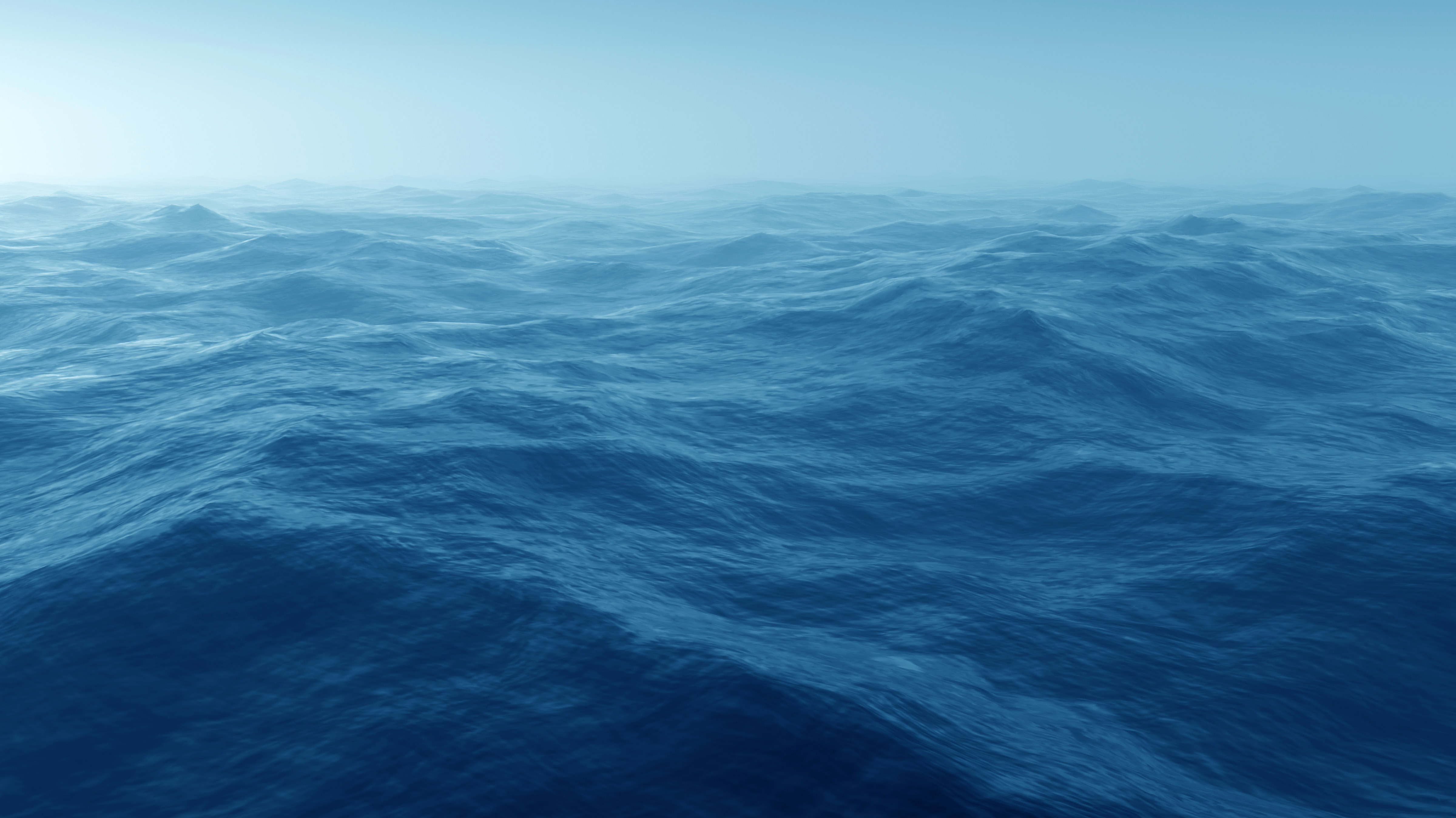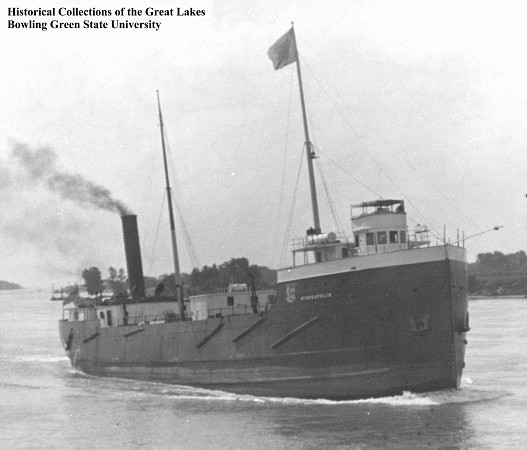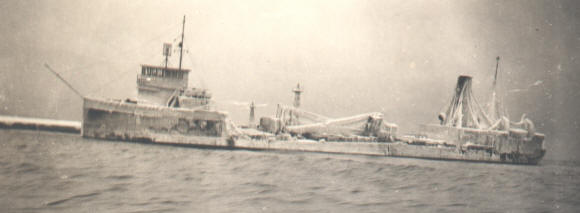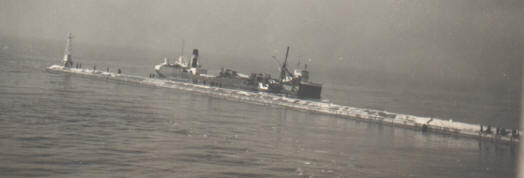The Burlington was built in Chicago, by the Chicago Ship Building Company, in the year 1897. She had a length of 238 feet, with a beam of 42 feet, a gross tonnage of 2,029, and net tonnage of 1,222. She was steel hulled and laid out in the traditional bulk freighter style.
She was launched as the Minneapolis and spent almost two decades doing lake trade before being sold to a company out of Boston that was involved in ocean trade. In 1916, she was sold to Empressa Navera Co., of Havana Cuba, and continued her international career under the name Ramon Marimon. In 1922 she was sold back to a Great Lakes interest and again renamed, this time, the Burlington. At the time of her loss she was owned by the Gartland Steamship Co., of Chicago.
The following is a newspaper account of the loss of the Burlington on December 6, 1936:
Surf Breaks Up Ship Aground off Holland
Holland, Dec.7. — A pounding Lake Michigan surf Monday had made a “total loss” of the freighter Burlington, which ran aground Sunday while entering the Holland harbor. Following a cruise around the freighter in a U. S. Coast Guard boat, E. J. Clemens, officer in charge of the Holland Coast Guard station, said the Burlington’s back was broken and that a jagged hole was observed, extending from the deck to the water line, indicating the keel was broken also.
The sea was too rough to attempt boarding the ship, Clemens said. Accompanying him were Capt James Woods of the Burlington and representatives of the underwriters and of D. Sullivan & Co., Chicago, owners of the craft. As soon as the heavy surf calms, Capt. Woods said, an attempt would be made to remove the cargo of 2,217 tons of pig iron which the vessel was bringing into port here from Toledo when it grounded on a sandbar. The cargo’s value was estimated at $45,000.
Capt. Woods and his crew of 24 were rescued form the 250 foot freighter Sunday. Most of the men had to be removed by a breeches buoy, a line stretched from the freighter’s deck to the Coast Guard boats. Four trips were made. It took about two hours to complete the rescue. None of the crew suffered from the experience.
The following day, Capt. Woods stated having tugs or the Coast Guard’s Escanaba available could have saved his ship. Over the winter, the Burlington was battered by wave action and ice. In the spring, some of her cargo was taken to the Holland Furnace Co., and parts of her machinery to the Louis Padnos Iron and Metal Co.
An attempt to raise the hull was made, but the vessel was too severely damaged and she broke up further. Divers have reported finding pieces of metal just north of the north pier. With shifting sands and heavy boat traffic, this site is difficult to locate and access safely.
The following series of photos documented the final destruction of the Burlington by the waves.
Images, Historical Collection of the Great Lakes, Bowling Green State University






